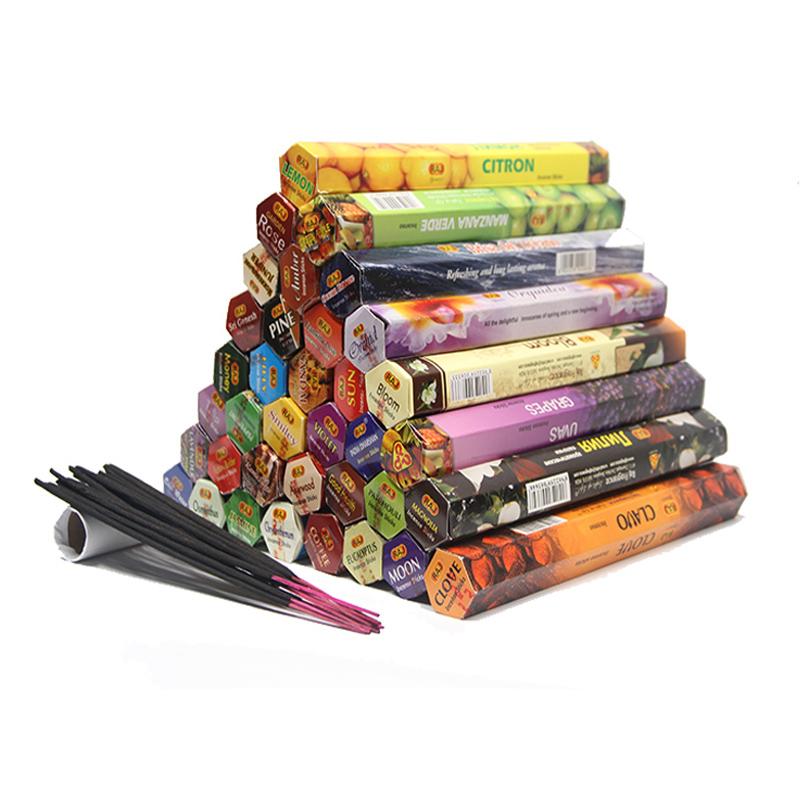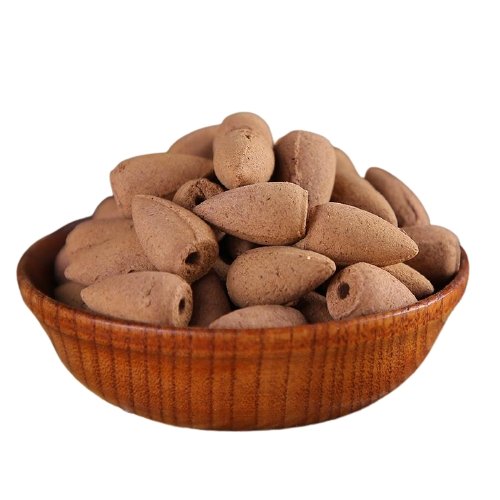Is Incense Smoke Dangerous for You?
In our increasingly fast-paced and stressful society, many people are looking to take better control of their physical and mental health.
Some meditation practices, such as mindfulness, involve burning lucky incense. With yoga and meditation being more popular than ever, so are these types of products.
However, the use of lucky incense is far from a new phenomenon.
Buddhism, Hinduism, Christianity and even Islam: for centuries, incense has been an important part of religious ceremonies taking place in many, sometimes very different, cultures.
Whether you burn lucky incense as an act of worship or simply to scent your home with a relaxing scent, there is one question you should ask yourself.
Is incense smoke bad for me?
Contents :
Use of Incense Through the Ages
Can incense smoke contain harmful pollutants?
Is incense smoke bad for your lungs?
Is lucky incense smoke as bad as tobacco smoke?
What are the alternatives to using lucky incense?
Are there ways to reduce indoor air pollution caused by burning incense?

Use of Incense Through the Ages
No one knows when the use of lucky incense began.
This may date back to when man first discovered fire (and subsequently discovered that burning various substances in it produced a variety of different scents).
The first historical mention of burning incense is found in Egyptian society in the 15th century BC.
Incense then was considered “ the aroma of the gods ” and was burned as a kind of religious offering.
Since then, incense has been part of religious ceremonies in most European, Arab and Asian cultures.
In some families, it is common for incense smoke to be present in the air in the home for several hours a day.
It has long been thought that lucky incense had close links with certain spiritual powers, and that it was thus capable of attracting energies or even protecting the home from malicious spirits.
In Taoism and Buddhism, burning incense is traditionally used for the worship of ancestors and deities.
In some Christian traditions, lucky incense is often used during religious services, and in a variety of other rites.
In addition to playing a role in various cultures and religions, many people use lucky incense as a home air freshener.
Another popular use of incense is to cultivate a relaxing atmosphere during yoga and meditation.
How is lucky incense burned?
To understand the effects of the different components present in incense smoke, you must first understand what the lucky incense itself is made of!
Incense is traditionally created with plant materials, such as different wood species, herbs and resins, as well as essential oils.
Lucky incense can undergo direct combustion. It then generally comes in the form of incense sticks or cones.
Indirect combustion incense is most often in powder form, although we can also find it in the form of paste or masses of plant matter.
This type of lucky incense is burned by placing it on a surface that will serve as fuel, such as burning coals or glowing embers.
When you burn something (tobacco, incense, firewood, or even food) you start a process called combustion.
In the case of burning lucky incense, it is a chemical reaction between the fuel source (incense) and oxygen which results in the production of a gaseous product (smoke).
Can incense smoke contain harmful pollutants?
When incense is burned indoors, the smoke created during this process can be a major source of air pollutants, as it produces harmful gases and particulate matter (Cheng, Bechtold, & Hung, 1995).
In fact, many types of incense smoke contain carcinogens similar to those in cigarette smoke (Fribourg et al., 2008).
The exact type of pollutants released into the air depends on the chemicals present in the lucky incense burned.
A study that tested 23 different types of incense bluntly found that the concentrations of carbon monoxide (CO), nitric oxide (NO), and sulfur dioxide (SO2) present in incense smoke may be sufficiently high to harm your health (Jetter, et al., 2002).
This same study found that incense smoke emits large amounts of fine particles that could cause the air inside your home to exceed safety standards for ambient air quality.
These standards were created to protect us against air pollutants deemed harmful to public health and the environment.
Because incense is typically burned in enclosed spaces with little ventilation, particles can build up in your home over time.
If you regularly burn lucky incense, you could be exposed, via the air in your home, to toxic products and pollutants that are more harmful than you think.

Is incense smoke bad for your lungs?
We know that burning incense can add high levels of particulate matter to the air in your home. But actually, why are these particles so bad for your health?
These particles and chemical compounds are dangerous because they are small enough to be inhaled. They can travel deep into your airways, including your lungs, and even enter your bloodstream.
According to the EPA, exposure to particles in incense smoke has been linked to asthma, lung inflammation, and even cancer.
In fact, long-term exposure to lucky incense smoke has been found to be linked to an increased risk of upper respiratory cancers, particularly lung cancer.
Additionally, the levels of carbon monoxide, formaldehyde, and nitrous oxide found in incense smoke can cause inflammation in lung cells, sometimes preceding asthma attacks and other respiratory problems (Cohen et al., 2013).
Children and unborn babies are particularly sensitive to the effects of carbon monoxide in the air from burning lucky incense, as their bodies continue to grow and develop. They therefore have a particular need for oxygen.
Carbon monoxide can also cause adverse effects in people with pre-existing heart conditions.
Is lucky incense smoke as bad as tobacco smoke?
How harmful is incense smoke?
A 2015 study found that incense smoke and tobacco smoke may have more similarities than you think.
Both types of smoke were found to have similar toxicities and produce similar mutagenic reactions in cells exposed to the smoke (Zhou, et. al, 2015).
Under certain conditions, incense smoke has even been shown to be toxic at lower concentrations than cigarette smoke.
However, it is important to note a few things when interpreting these results:
When you burn lucky incense, you don't expose your airways to the same concentration of smoke as when you smoke a cigarette.
This may play a role in how different types of smoke affect your lung cells.
Only four incense sticks and one cigarette were tested in this study. This sample size is too small to apply the results to lucky incense in general, and tobacco smoke as a whole.
The study's lead researcher worked for a tobacco company. When looking at scientific studies, it is always important to note any potential sources of bias.
Although we cannot conclude in the affirmative when it comes to saying whether incense smoke is worse for your health than cigarette smoke, we do know that it can be a source of pollutants, which then reach high levels in your indoor air.
This is especially true when lucky incense is burned in small, enclosed spaces in which toxic particles released in the smoke can build up over time, similar to how cigarette smoke can build up in a room to yellow the walls and furniture.
Note : Your pets breathe the same air as you, so any pollutants released by incense smoke can affect them as well as any other living thing.
What are the alternatives ?
If you're using incense to make your home smell nicer, there are several other ways to achieve the same effect.
The first is simple. You just need to take extra precautions to keep your home clean.
Find and eliminate all sources of bad odors. When you follow these tips, it often doesn't take much effort to make your home smell great.
Here is a second tip that can replace the use of lucky incense.
Consider using scented plants, essential oils, or dried flower potpourri to give your home a fresher scent without adding harmful volatile organic compounds (VOCs) to the air you breathe.
However, you should consider avoiding aerosol air freshener sprays.
Some indoor air fresheners may contain high levels of VOCs which can increase indoor air pollution and cause a range of negative effects on your health.

Are there ways to reduce indoor air pollution caused by burning incense?
For some people, incense plays an important role in their beliefs, and therefore in their religious practices.
Avoiding incense completely may not be an option.
Here are some steps you can take to protect yourself from the side effects of habitually inhaling incense smoke:
Increase your ventilation. Consider opening windows and doors to improve air circulation in the room where you are burning lucky incense.
Switch to a safer type of incense : Not all incense is created equal.
By choosing incense made from natural, plant-based ingredients without the addition of harmful chemicals, you may be able to reduce the amount of air pollutants released in the smoke.
Consider trying smokeless or low-smoke incense. If possible, you should avoid burning resin incense on a charcoal briquette.
Smoke from burning charcoal can produce additional air pollutants such as carbon monoxide (Cohen et al., 2013).
Avoid using lucky incense regularly in high-traffic areas of your home, especially if you have family members who have lung problems.
Having a specific area designated for the use of incense, and nothing else, can help reduce your exposure to pollutants and toxic products sometimes produced by burning lucky incense.
Indoor air purifiers and incense smoke
If you can't avoid burning incense regularly, using an indoor air purifier for smoke can be another way to reduce the amount of pollutants that build up in your home.
However, no air purifier can completely remove the smoke or particles produced by your lucky incense.
Incense smoke, if burned regularly and in large quantities, can be harmful to health. The same goes for inhaling any type of smoke.
The best way to prevent lucky incense from decreasing the air quality in your home is to burn it as little as possible.
It may be better to enjoy the benefits of burning lucky incense with less harmful incense sticks.
You will have understood, at La Porte Du Bonheur, we are worried about the state of health of our neighbors.
If you want to discover other articles talking about health, don't hesitate to follow our blog regularly, subscribe to the newsletter, or even send us an email directly !
Lucky charms featured in this article

Incense Stick
See more
Cone Incense
See more

